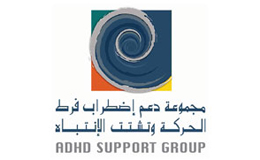Attention Deficit Hyperactivity Disorder: Time for Change
Attention Deficit Hyperactivity Disorder (ADHD) is one of the most common childhood disorders characterized by a high level of distractibility, inattention, impulsivity as well as inability to focus for long periods of time. Children with Attention Deficit Disorder, with or without hyperactivity (ADD) are frequently diagnosed as learning disabled since symptoms persistently interfere with their ability to learn. 
Additionally, ADHD children often suffer a lack of strong social relations because those around them find dealing with their hyperactivity difficult. These behaviors interfere with school, work, home, and social situations.
A child with a deficit disorder may have difficulties making or keeping friends, and may show a high degree of disorganization as well as a lack of mental focus in their day-to-day life. If these problems remain untreated they are likely to affect behavior as well as social and academic progress at school, with lifelong consequences.
A growing global health problem, ADHD affects as many as seven percent of the total population of children worldwide. In addition, more than 60 percent of these individuals carry the disorder with them into adulthood. It is suspected that between 3-7% of children have some level of ADHD; usually boys more than girls. Additionally, it is often misdiagnosed or ignored by simply labeling the child as being naughty or rebellious.
In order to understand this disorder we must first understand the possible causes of ADHD. These can be divided into two main categories: biological and environmental. According to Dr. Kenny Handelman, we now know that when children with ADD/ADHD are fully engaged in an activity their brain wave function remains at a lower level. Children who do not have ADHD are able to reach Beta brain waves, which are the highest type. This makes all the difference in the behavior and the level of attention, as children with ADHD do not achieve beta brain wave levels. Another view is that the brain has trouble balancing neurotransmitters.
Studies also show that ADHD is hereditary. Several studies involving twins suggest a very strong link for familial tendencies to have ADHD. Around 80% of variants of the phenotype (expression of a gene) can be ascribed to hereditary factors. According to a study conducted by the Faculty of Psychology at the University of Barcelona, Spain, results showed that there was a 64% correlation for familial scoring for impulsivity and other ADHD traits. The rate of inheriting ADHD is similar to that of the genotype for height or hair color.
Environmental factors, which some specialists feel are involved in the expression of ADHD, include a food preservative (benzoate) and colorings. According to a study conducted by the University of Southampton and published in the Lancet medical journal, non-ADHD children who ingested a drink with typical food preservatives and colors, showed an increase of hyperactive behaviors by 10%. These ingredients are found in many of the foods children tend to eat. Removing such items from a child’s diet may help in alleviating hyperactive behavior; however parents should not think that simply taking these additives out of a child’s diet will prevent all hyperactive disorders. It should be understood that there are many factors involved in the expression of ADHD, but monitoring a child’s diet is something that is feasible with positive outcomes.
As with many other disorders, ADHD is usually diagnosed by clinical observation along with interviews and questionnaires from parents and teachers. These diagnostic tools help the doctor evaluate to what extent the child expresses ADHD traits and how it interferes with their ability to cope with daily issues. This will also assist in deciding upon a course of action; behavior modification with or without medication. 
The most effective way to help children with ADHD is a multimodal form of treatment where behavior modification is supported with medication, if the doctor feels that medication is necessary. Behavior modification is an important tool to help children make advances in their behavior, skills, and learning outcomes. Additionally, according to a small, well-designed study published April 8, 2004 in Biomed Central Psychiatry, children who took zinc supplements along with their ADHD medications had greater improvement and improved at a faster rate than those who took only medications.
Doctors typically choose between either stimulant or non-stimulant medications where the need exists. The main three stimulant medications for ADHD are:
Methylphenidate (Ritalin, Concerta, Daytrana)
Dextroamphetamine-amphetamine (Adderall)
Dextroamphetamine (Dexedrine)
Ritalin and Concerta come in short (approximately 4 hours) or long duration (6-12 hours) tablets while Daytrana is a patch for children to wear directly on the skin. This patch is very convenient for young children while they are in school; however, it takes much longer for the medication to enter the blood stream and begin to have an effect. The non-stimulant medication Atomoxetine (Strattera) is a norepinephrine reuptake inhibitor which does not wear off during the day.Currently, Ritalin and Concerta are available here in the Kingdom.
As this disorder is becoming more understood and recognized, it is becoming clear that these children need the positive support from both home and school in order to be successful and have positive learning outcomes. When left untreated, these children have a higher chance of dropping out of school, turning to substance abuse, and show more difficulty mainstreaming into adult life.
Within Saudi Arabia, many advances have been made in both addressing the issue among medical staff as well as offering seminars and lectures to educational organizations. One of the better known groups is the ADHD Support Group which held a conference in November, 2009 under the auspices of King Abdullah bin Abdulaziz Al Saud, Custodian of the Two Holy Mosques. The Joint International Conference of the ADHD Support Group and American Academy of Pediatrics gathered to discuss the training of specialist in ADHD to be able to correctly identify and treat children with ADHD.
The need for such important measures is supported by a study in which a cohort of 1287 students, aged 6-13 years in 67 government and 10 private primary schools in the Dammam area, were evaluated for prevalence and associated factors. The results of the study clearly suggested that several approaches need to be directed towards “the child, family, the primary health care services, the school, and the community” and that changes should “be implemented to reduce the prevalence and incidence of ADHD”. It is hoped that the next few years will find more attention given to this health care issue specifically in obtaining support for families and the educational sector in an effort to correctly diagnose and treat children with ADHD.
For more information about ADHD:
International Association for Child and Adolescent Psychiatry and Allied Professions (IACAPAP): visit
www.iacapap.org